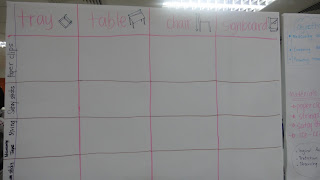f) Developing Number Sense
One of the basis of mathematics is an understanding of number relationships. Children need to make sense of the ways numbers are used in their everyday world. Number senses and concepts develop gradually over time as young children explore, manipulate and organize materials and as they communicate their mathematical thinking. One of the earliest number concepts is counting. It begins with developing oral counting skills or rote counting. Following this is one-to-one correspondence, where only one number is linked with each item in a set of objects.
I have classified the activities from the text basing on my thoughts of practices in local preschools, as follows:
Commonly practiced:
J Relationships of More, Less, and Same
J Early Counting
J Numeral Writing and Recognition
J Counting On and Counting Back
J Estimation and Measurement
J Data Collection and Analysis
Not Commonly practiced:
L Anchoring Numbers to 5 and 10
L Doubles and Near-Doubles



